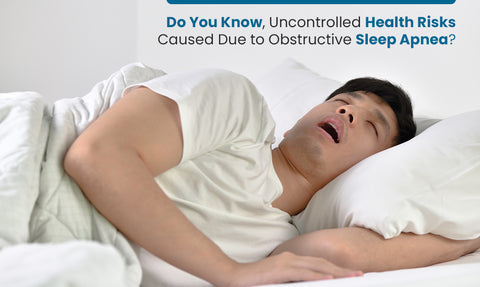
After 90 minutes of sleep, we are generally in the REM (rapid eye movement) sleep phase. During this phase, our muscles enter a state of temporary paralysis, which is partially or completely absent in people with rapid eye movement (REM) sleep behavior disorder.
In this article, you’ll learn more about REM sleep behavior disorder, its causes, symptoms, management techniques, and treatment options.
What is REM Sleep Behavior Disorder?
If even after entering the REM sleep phase, your muscles aren’t in a state of temporary paralysis, then you have RBD.
Because of an absence of temporary muscle paralysis, people with this condition act out their dreams, leading to a lot of flailing and jerking.
This can prove injurious not only to them but also to anyone sleeping beside them.
The more frightening the dream, the more aggressive the movement of people suffering from RBD.
Generally, these episodes occur three to four times while the person is in the REM sleep phase. It’s quite rare to experience these symptoms once a week or month.
Symptoms of REM Sleep Behavior Disorder
Common behaviors displayed by people with RBD include:
- Talking or cursing
- Screaming and shouting
- Flailing arms around
- Punching and kicking, if they experience a nightmare
- Sleepwalking (somnambulism)
People with this condition generally remember their dreams quite clearly.
Causes of REM Sleep Behavior Disorder
Causes of RBD are still not clear.
However, it’s clear that neural pathways are altered in some way, leading to a lack of muscle paralysis when sleeping.
RBD may be caused by Certain antidepressants, such as:
- Tricyclics
- Serotonin-specific reuptake inhibitors
RBD may be a precursor to other serious neurodegenerative diseases, such as Parkinson’s disease.
One study noted that 38 percent of men initially diagnosed with RBD later developed Parkinson’s disease. 7 percent of patients developed other neurological disorders, such as dementia and multiple systems atrophy.
Risk Factors for REM Sleep Phase Disorder
Factors that put you at a greater risk of developing RBD include:
- Being over 50 years of age
- Having neurodegenerative diseases, such as:
- Parkinson’s disease
- Dementia
- Multiple system atrophy
- Substance abuse
- Use of certain antidepressants
- Quitting alcohol
Diagnosis of REM Sleep Behavior Disorder
After learning about your symptoms, your medical history, and that of your family, the doctor may order a sleep study.
Sleep study for RBD requires you to sleep for one night at a sleep laboratory. Machines are hooked to your body to record your:
- Blood oxygen level
- Heart rate
- Breathing
- Brain activity
- Muscle movement
If you’ve RBD, then the sleep study will show an absence of muscle paralysis during the REM sleep phase.
Treatment of REM Sleep Behavior Disorder
Generally, the treatment for RBD includes prescription medications.
Benzodiazepines, a class of drugs that alter levels of neurotransmitters, are generally used for treatment of RBD.
Your doctor may prescribe a low dose of Clonazepam (Klonopin) to treat REM sleep behavior disorder. Clonazepam can help around 90 percent of people suffering from RBD.
Apart from this, your doctor may prescribe melatonin or antidepressants to calm your mind and suppress violent behavior.
Note: Always follow the instructions of your healthcare provider when taking medications or supplements.
Lifestyle changes for REM Sleep Behavior Disorder
Because medications aren’t long-term solutions and may have side effects, you should make some lifestyle changes to improve your quality of life.
Here are a few lifestyle changes that you can make if you suffer from RBD:
Ensure safety
Because of violent movements during sleep, people with RBD are prone to injuring not only themselves but also anyone else who sleeps besides them.
Sleep related injuries may include:
- Cuts
- Bruising
- Fractures
- Blunt or head trauma
As there’s a higher likelihood of injury, people suffering from this condition must take deliberate steps to prevent an injury. Here are a few tips to create a safe sleep environment:
- Place the bed against a wall and place a cushion alongside the wall
- Sleep on the ground floor if you suffer from somnambulism (sleep walking)
- Keep sharp and dangerous objects away from your bedroom
- Don’t sleep by the window
- Your partner should sleep in a different room if your symptoms are severe
If you sleepwalk, then you should pad the corners of the furniture.
Improve Quality of Sleep
Many who suffer from RBD are prone to sleep deprivation, so it is essential to make good lifestyle choices so that they can avoid experiencing excessive daytime sleepiness.
Here are some lifestyle choices that you can make:
Exercise Regularly
Leading to the release of endorphins, which reduce symptoms of depression, exercise can enhance your mental health.
And it does not take long. Simply exercising for 30 minutes a day can provide a plethora of health benefits.
Maintain Proper Sleep Schedule
Our mind functions on the basis of ingrained habits. So if you sleep at the same time everyday, you’ll find it easier to fall asleep.
If you can’t fall asleep quickly, then you can ask your doctor about melatonin supplements, which relax the mind and promote sleep.
Avoid Stimulants
Alcohol and caffeine can trigger and exacerbate symptoms of REM sleep phase disorder. Talk to your doctor about the drugs that you’re currently taking, as a few drugs act as triggers for RBD.
Part of your treatment plan may include quitting these substances.
Conclusion
REM sleep behavior disorder can often be successfully treated with medication, such as Clonazepam. But these drugs may have some side effects, including drowsiness in the morning, confusion, and balance and memory problems.
You can also try melatonin supplements to help your muscles relax and enjoy better sleep. But consume supplements or medications only after consulting a certified medical professional.












